If you’ve ever spent a long period of time with a group of children, then you know how difficult it can be to find ways to pass the time. Fortunately, there are things that you can do to make sure that everyone has fun together, such as playing fun card games!
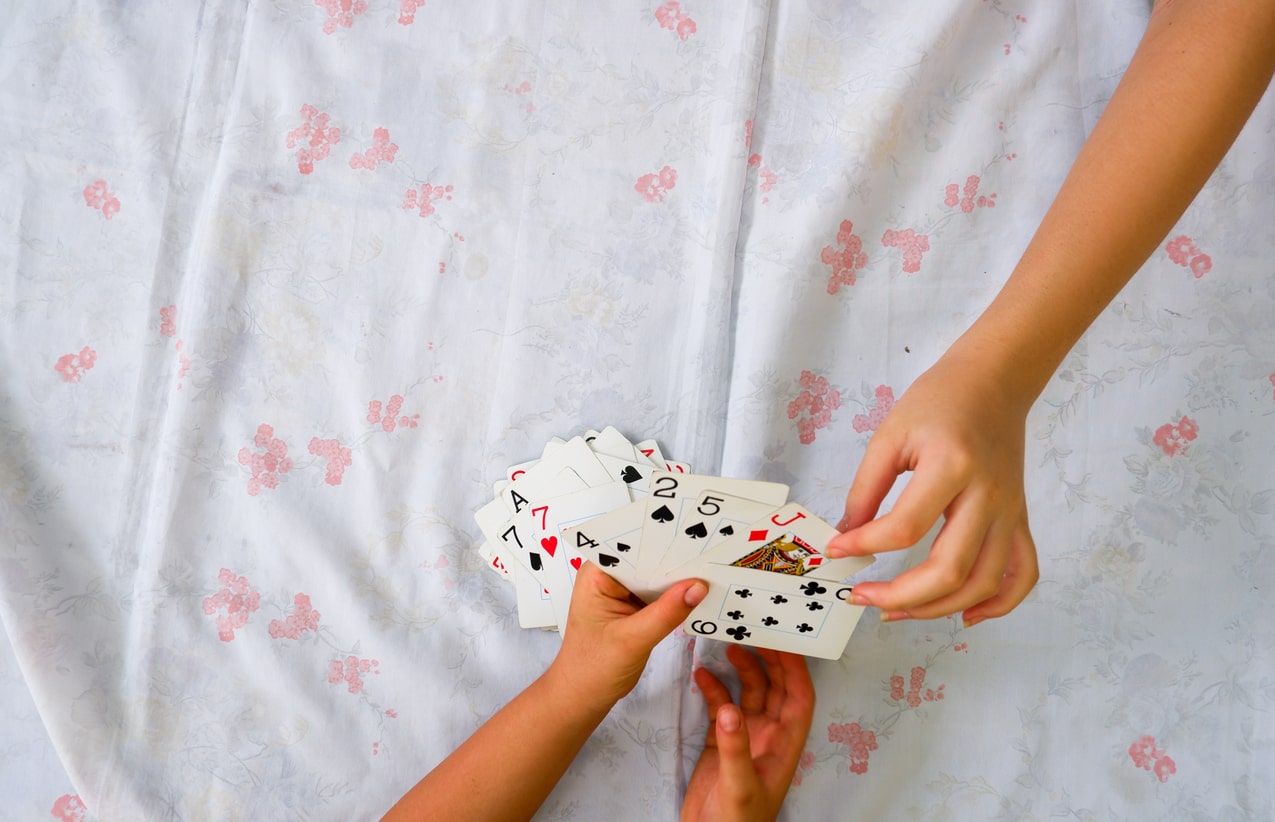
If you love to play card games but are unsure if your favorites are child-friendly, then this list is for you. Before you teach the kids how to play euchre or poker, try out one of these fun card games that will be a lot easier for kids to understand and more likely to guarantee fun.
Why Kids Should Learn Card Games
Card games aren’t just an activity for a rainy day. Kids can benefit from several aspects of traditional card games. Card games help teach kids the following skills:
- Sportsmanship: Many card games such as I Doubt It and Uno are based on deception with rules put into place specifically to take a good-natured dig at other players. Learning how to accept these tricks gracefully and in the spirit of good humor is an important skill for children to learn early.
- Counting: Card games often include numerical sequences and keeping track of points. These are good exercises for helping children learn basic addition and subtraction. Card games also teach the recognition of symbols and rules.
- Memory: Many card games directed at children are designed as small tests of their memory and reflexes in response to memory. Over time these types of brain exercises can help build memory retention and mental quickness.
- Entertainment value: Unlike many more complicated board games, card games are easy to teach to others. Cards are also cheap and portable. This makes knowing simple card games a useful tool that kids can use to entertain themselves once they’ve been taught how to play by an adult. Cards are perfect for long car trips or camping.
- Mastery: Children who learn card games young often have an easier time picking up more complicated adult card games such as bridge or poker later in life. Cards can serve as a great hobby for people of all ages, and learning in childhood often leads the child to love playing cards as an adult.
In general, card games are a fun way for kids to occupy themselves while learning valuable skills at the same time. The best part is that there are dozens of card games you can teach kids, so there’s never an excuse for getting bored!
Tips for Helping Kids Play Card Games
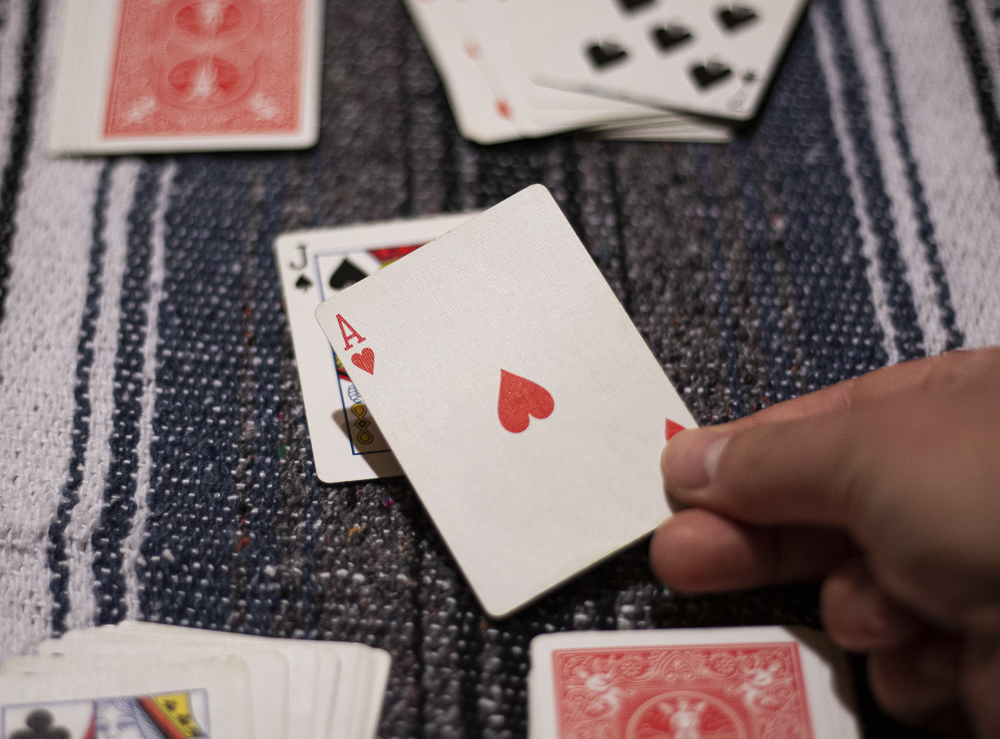
Teaching kids how to play card games is a lot of fun, but it requires some patience too. It’s important to be proactive in teaching kids how to play cards rather than just leaving them to their own devices if you want to avoid arguments over the rules of the game later.
Here are a few tips for helping kids learn to play card games:
- Start small. Go with easier card games like Memory or Slap Jack before graduating kids to more complicated games like gin rummy.
- Keep it light. Even if you’re a competitive person, try to keep the attitude of the game casual to help teach the kids not to take the game so seriously. This can help you avoid tantrums later on.
- Write down the rules. Most card games come with rule guides, but these little flipbooks are often filled with tiny, difficult-to-read text. Write a simplified version of the rules in large print on a piece of notebook paper so kids can refer to them if they get stuck.
- Supervise the first few rounds. Even if you think the kids have the idea of the game they’re playing, it’s a good idea to watch the first few rounds of the game so you can correct any mistakes and clarify the rules as you go. This will also allow you to give advice to kids if they struggle at first.
Choosing Card Games for Kids
When it comes to choosing card games for kids, there are a few different factors you need to look at. Here are a few ways to determine which card games to introduce to kids:
- Recommended age group: Most card games (even games played with a traditional 52-card deck) have a recommended age group that they’re designed for.
- Temperament: Some children may still be getting a grasp on cooperative play, and you might want to avoid more competitive games that involve slapping or stealing cards for kids who are high-spirited or cutthroat while playing.
Keep in mind that in many cases, there are kid’s versions of playing cards with bigger, brighter numbers or easier-to-read symbols than the ones found on traditional card decks. These decks might be more suitable for children who are being introduced to card games for the first time.
Can Kids Play Card Games On Their Own?
Once children understand the basic rules of a card game, they can generally be left to play the game on their own with a pad to help keep score.
Older children (ages seven and up) tend to be able to play cards without supervision more easily than younger ones. This is because they have a better grasp on the rules and on their emotions when they lose.
15 Card Games to Keep Kids From Getting Bored
1. Go Fish
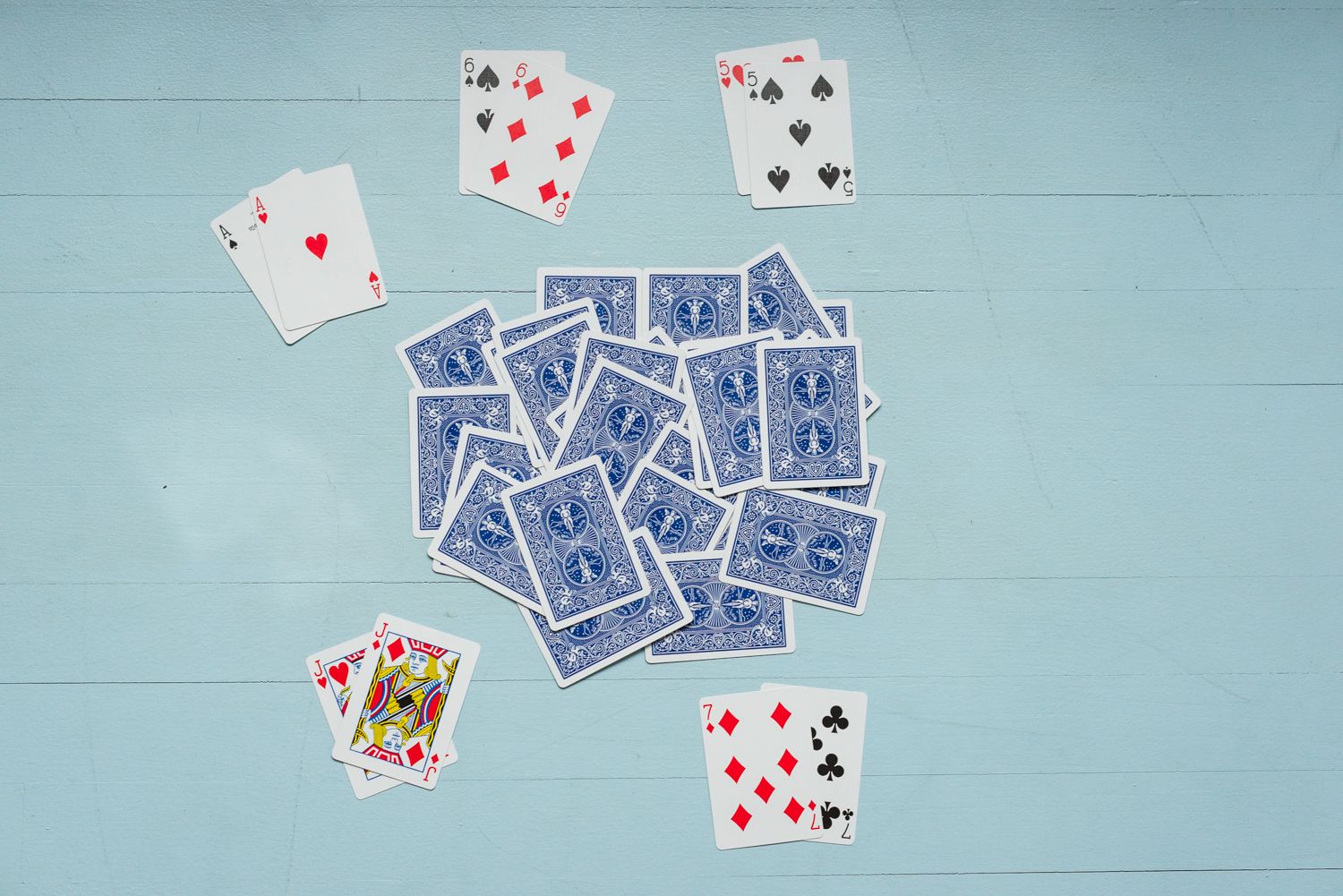
The objective of a game of Go Fish is to collect all four suits of any given number. For example, if you’re collecting number 8s, you are going to need to show that you have card number 8 in hearts, spades, clubs, and diamonds. At the end of the game, the player who has collected the most “sets” wins!
To play the game itself, you’ll want to deal every player seven cards each (for two players, if you have three players they get six cards each and if there are four players they get five). Then, you will put the remainder of the deck in the middle of the table — this is where you will fish from.
The players will then take turns asking their fellow players for certain cards, ex., they could go “Hey Katie, got any tens?” If they say no, they will say “go fish” and the player will have to grab a card from the pile.
If the card that the player picks up happens to be the card that they are after, they can show it to the rest of the players and then fish for another card. The game ends when all of the cards in the deck have been turned into sets. (via The Spruce Crafts)
2. Crazy Eights
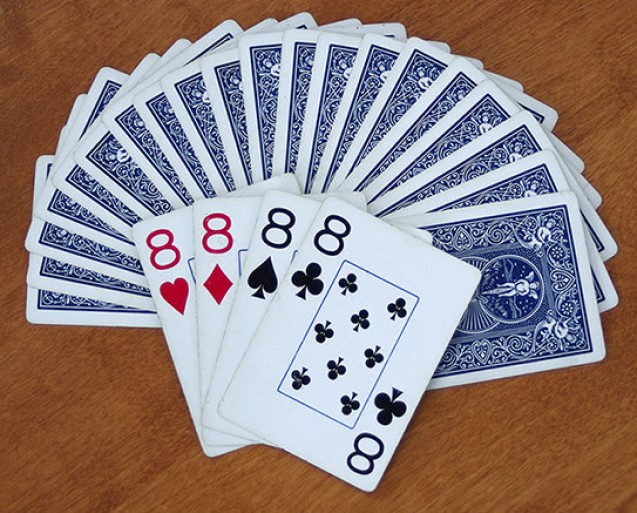
In a game of crazy eights, every player (up to four) is given seven cards (five for fewer than four players). The rest of the cards go into a separate pile, with the first card turned facing up next to the pile. The small pile is the one you play from.
Next, take a look at the top card of the discard pile. Whoever is to the left of the dealer will start the game by playing the card that matches the suit and/or the number of the first card. If they don’t have one that matches, they will have to draw cards until they do.
Every player afterward must follow the same rules to match their cards. Eights are “crazy” which means they can always be played, no matter what the card is. The first person to play all of their cards wins. (via Family Game Shelf)
3. Kent
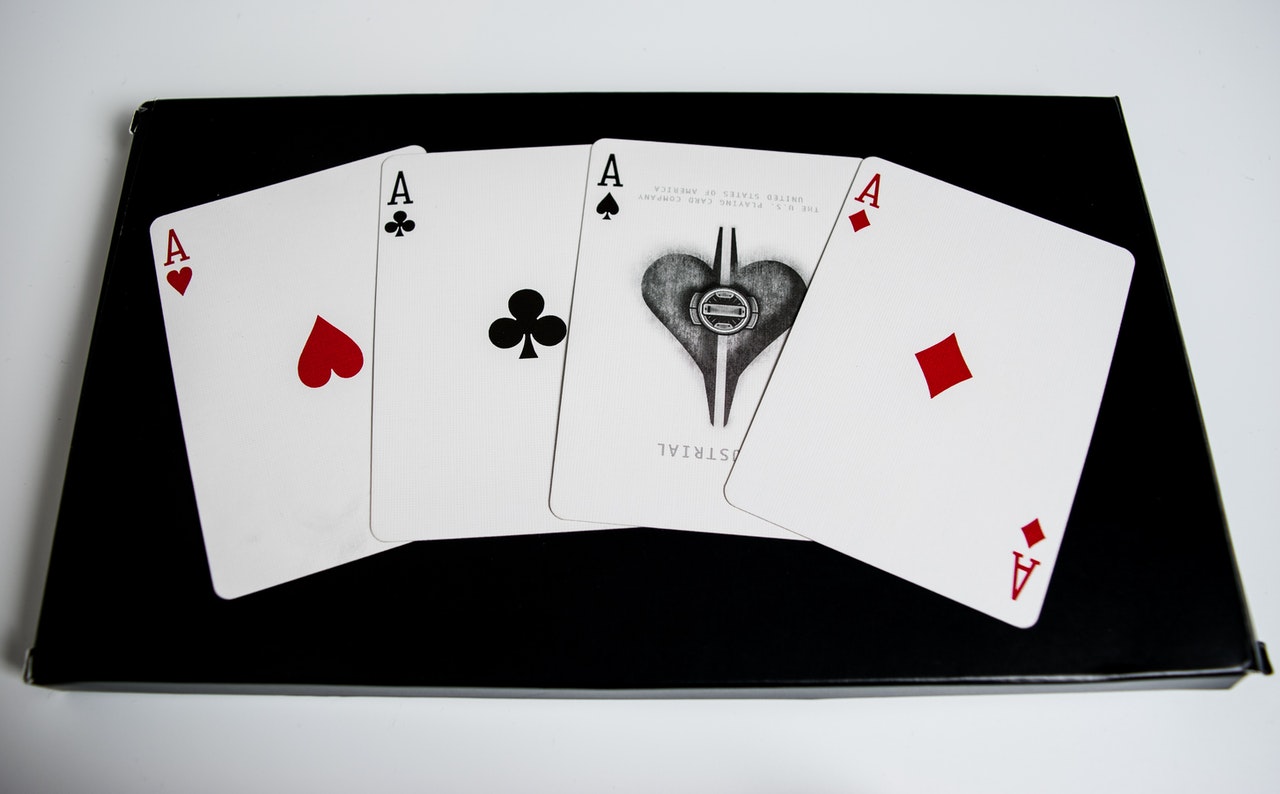
Kent is a fun game that must be played with four players. The reason why this number of players is so important is because the game will be played in two teams of two. Technically, you can play this game in as many pairs of two as you would like, but it’s most simple when you play with two pairs.
The game then goes like this: first, you’ll want each team to confer with one another to come up with a “sign” that they will use to signify when they have four cards of a kind. This can be anything from a flick of the nose or a tug of the ear, but the less obvious the better.
Once the two teams have conferred and a sign has been determined, you can sit down at a table with both teams facing one another. Each player is then dealt four cards. There will also be four cards that are placed in the middle of the table.
These cards are turned around at the beginning of the game and every player has the opportunity to choose a card from the pile, discarding one when they pick up because there can only ever be four cards in your hand at a time.
After the first round, the four cards on the table are turned over with every turn. Every player needs to try to beat the other players to choose the card that they need to create a set of four. Once a set of four has been collected, the teammate must send out the agreed-upon signal to their teammate, who must yell out “kent!” when they spot it.
Heads up: if the opposite team notices the signal in progress, they can yell “signal!”. If they are right in picking up on the signal, the player who calls it out’s team wins and the other team loses. However, if they are wrong in their suspicion, the other team automatically wins, even if they weren’t displaying their signal at all!
4. War

War might be the most classic card game for two, and despite its harsh name, it’s also kid-friendly. To play war, deal an entire deck to both players, keeping them all face down. Nobody is allowed to look at their cards.
Then, each player will turn over their top card at the same time at the count of three. Whoever’s card is higher takes the two cards and adds them to their pile. This will continue until two cards that contain the same number are placed side by side.
When this happens, “war” begins. Both players must put two more cards with one face down on top of their original card and one face up. Whoever plays the higher face-up card wins the entire set of six cards. The first player to collect all of the cards wins. (via How to Play Stuff)
5. Old Maid
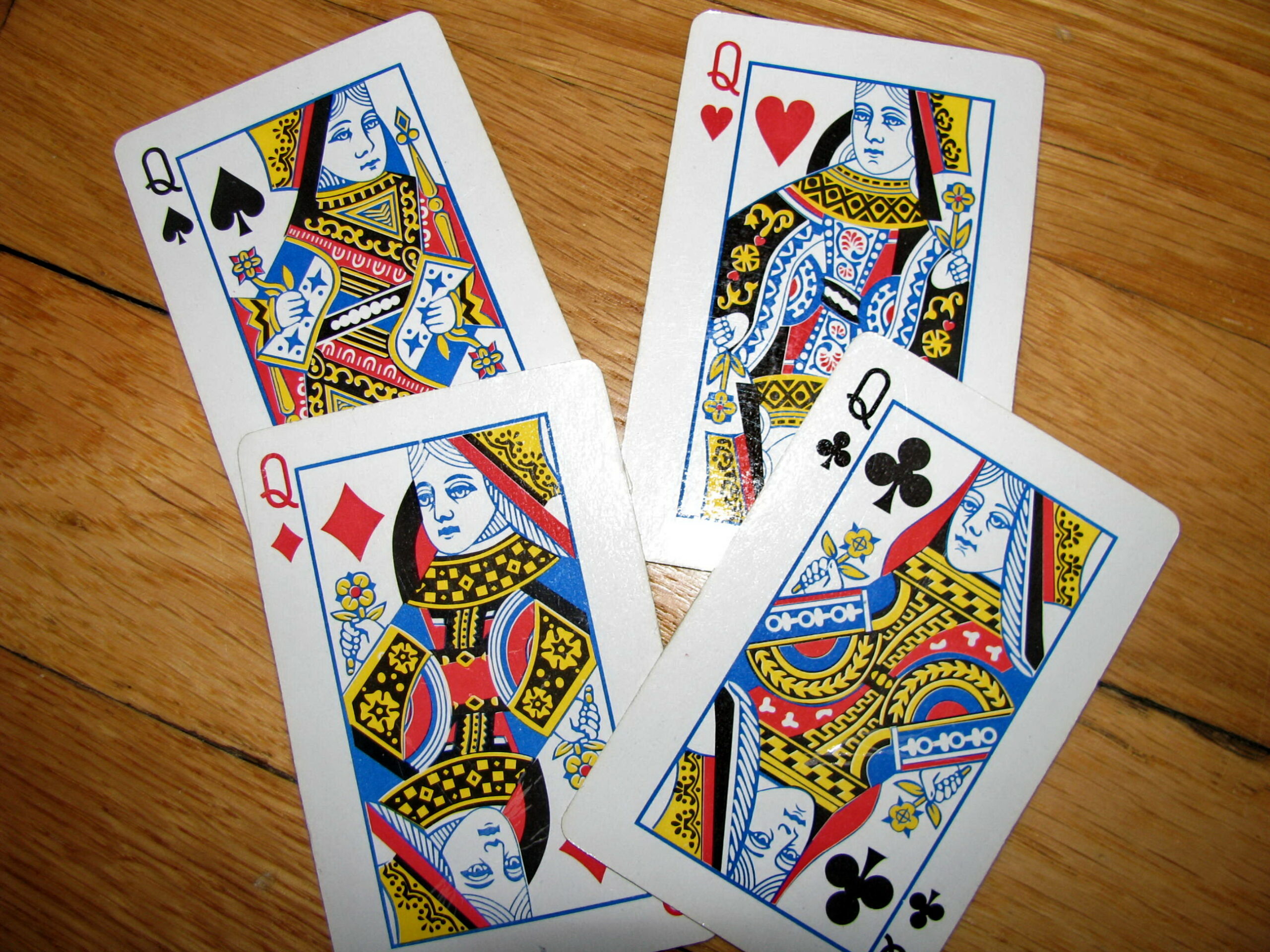
The object of this game is to get rid of all of your cards without being left with one lonely queen (which is also technically called the “old maid”, rudely enough). To play this game, you’ll need 51 cards, so be sure to remove one maid from your deck (it doesn’t matter which one).
Next, deal all of the cards out to up to six players. The first person to go fans out all of their cards instructs the player next to them to choose one at random. If the player choosing a card makes a pair, they place it face-up on the table.
The idea is to get rid of all of your cards as quickly as possible. The player that is left with the unmatchable Queen loses! Everyone else in the game wins. (via Best Children Games)
6. Spoons
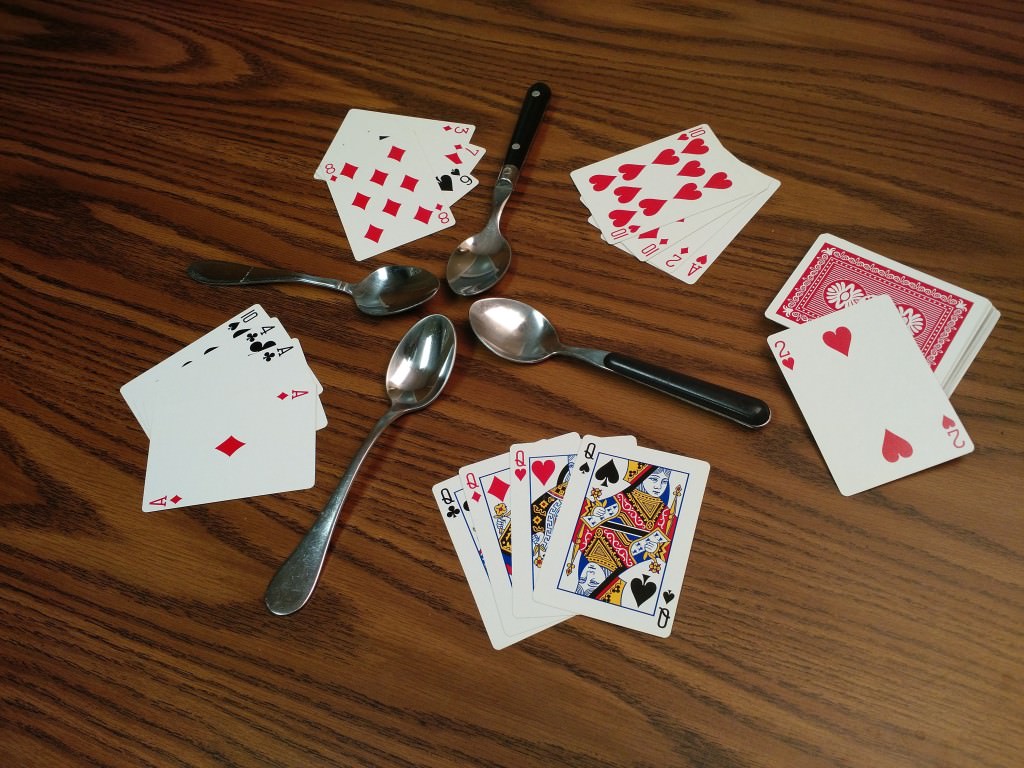
The game of spoons technically needs more than just cards — as the name suggests, you’ll want to put spoons in the middle of the group. You’ll always want to put one fewer spoon than there are game players (for example, if you’re playing with a group of five, you’ll want to use four spoons).
Like Kent, you’ll want to play four cards face up at a time, with everyone grabbing at the cards that they need to make a set. Once someone has a set, they can reach for a spoon. Everyone else in the game must grab a spoon, too — the one poor soul who fails to is out! (via 50 Campfires)
7. 52-Card Pick Up
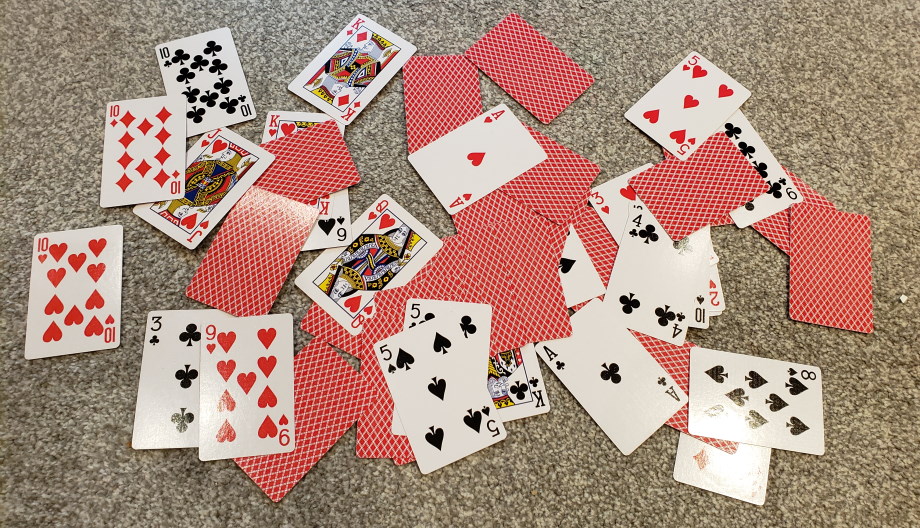
Okay, maybe this actually a card game — but if you have young children, this might be as far as you’re able to get. The objective of the game, of course, is to just throw all of the cards on the ground and then pick them up as quickly as possible. To make this extra fun, you can throw them in the air dramatically or allow your young child to enthusiastically shake them out of the box.
You may think that it’s not possible to play a game of cards with young children, but these easy game ideas prove that this is not the case! This is sure to create family memories that you will cherish for years to come. (via Data Genetics)
8. Slap Jack
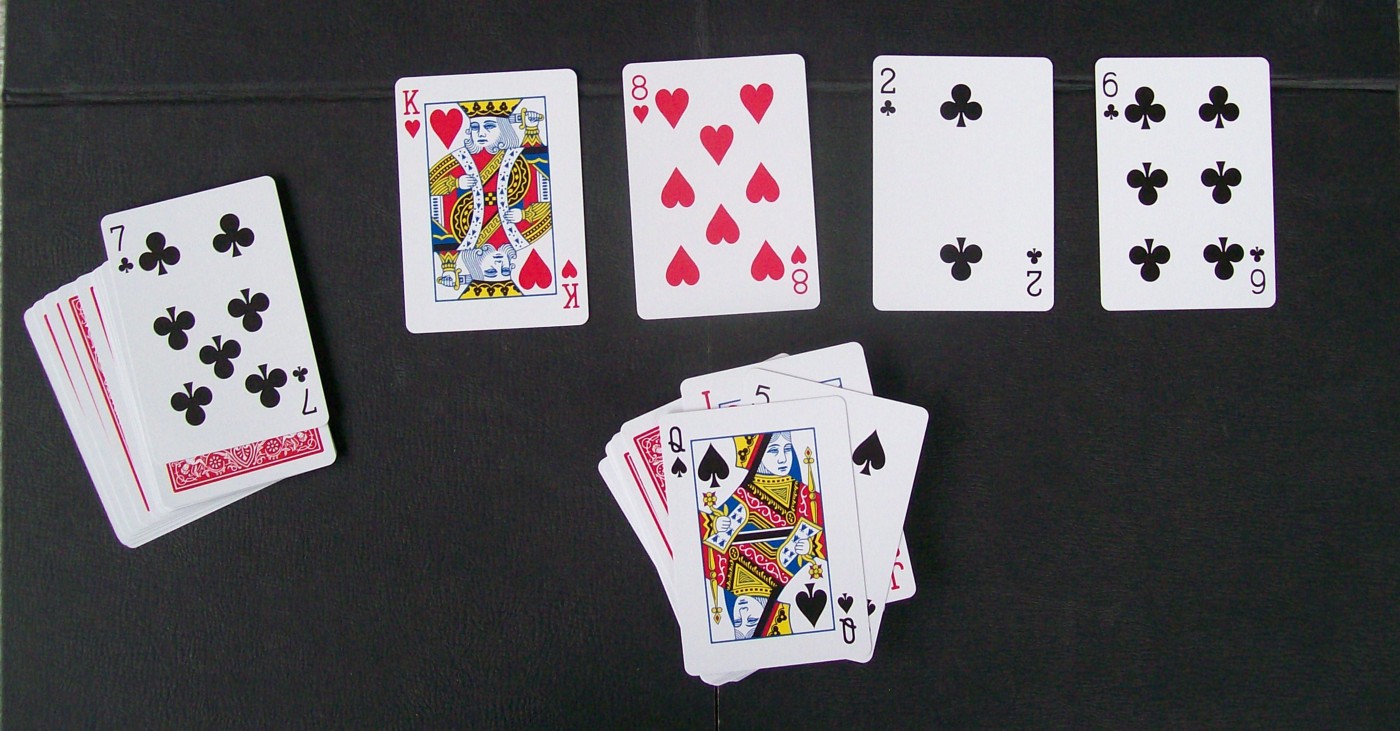
Slap Jack is a great game to teach children since it can be taught with a standard 52-card deck and has simple objectives.
The objective of the game is to win all of the cards in the deck by being the first person to slap the jack when it’s played in the central pile. The entire deck is divided out among the players and each player draws from their personal deck without looking at it.
The first player to slap the jack when it’s played wins the jack and all of the cards in the pile underneath it. Slap Jack is great for keeping kids occupied amongst themselves since the rules are very easy and it doesn’t require adult supervision. Make sure that kids focus on speed rather than force when it comes to slapping if you don’t want to listen to any spats though! (via Medium)
9. Speed
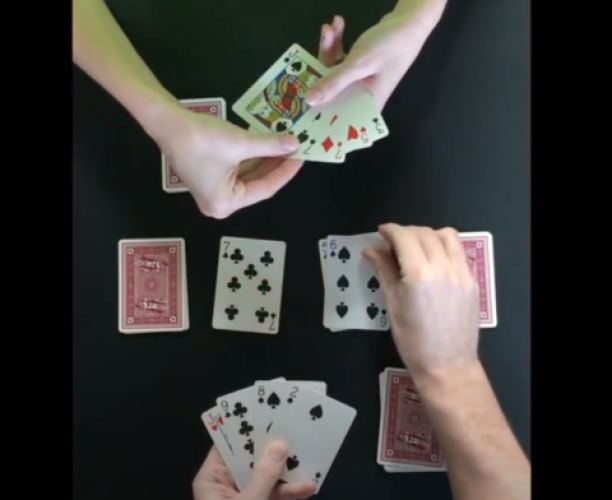
Speed is a classic card game that is perfect for two players and can be easily played by any card player six years or older. Speed is played with a standard 52-card deck. Unlike games where the object is to collect every card in the deck, Speed is a game where the objective is to get rid of every card in your hand.
The cards in Speed are divvied up by dealing out two hands to each player. Players get one hand of five cards to hold and another pile of fifteen cards to draw from. The dealer also places four piles of cards in the center – two piles with one card each, and two piles with four cards each.
The game of Speed starts when the dealer turns over the cards in the center. The object for each player is to use the central piles to build a sequence of cards.
There are no turns in Speed, and each player races to see how quickly they can add their cards to the four runs of cards in the center. Once they’re able to place a card from their hand in the central piles, they draw another from their 15-card deck. (via Playing Card Decks)
10. I Doubt It
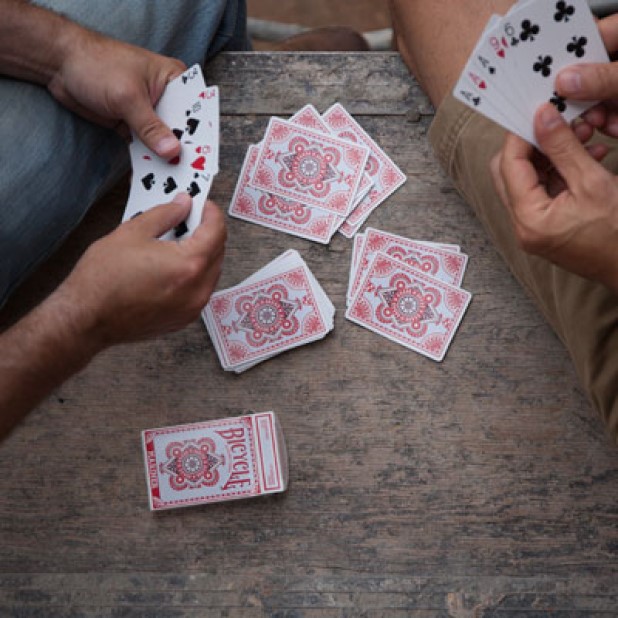
The game of Bullsh*t is a popular card game of deception among adults, but there is also a kid-friendly version of this famous bluffing game called I Doubt It. The objective of I Doubt It is to get rid of your entire hand before all of the other players in the game. Three to ten players can play I Doubt It, making it a great game for groups of kids to play.
To play, the entire deck is dealt out to the players until there are no cards left, and then the players begin to discard by announcing which cards they’re putting down. Cards are placed sequentially (Ace, 2, 3, 4, etc…) and players who have multiples of a card type can place them at the same time (Ex. “Two threes.”)
The object of the game is to try and discard extra cards or get away with lying about not having a card in the sequence by placing down another card in its place.
However, if one of the others suspects the player of lying about what they put down, they can call the player’s bluff by saying, “I Doubt It”. At this point, the player must flip over their cards and prove that they played what they said they did.
If the player did play the cards they said they were playing, the doubter must pick up the entire central deck and the sequence starts again. If the player was lying, the player must pick up the entire deck instead. (via Bicycle Cards)
11. Egyptian Rat Screw
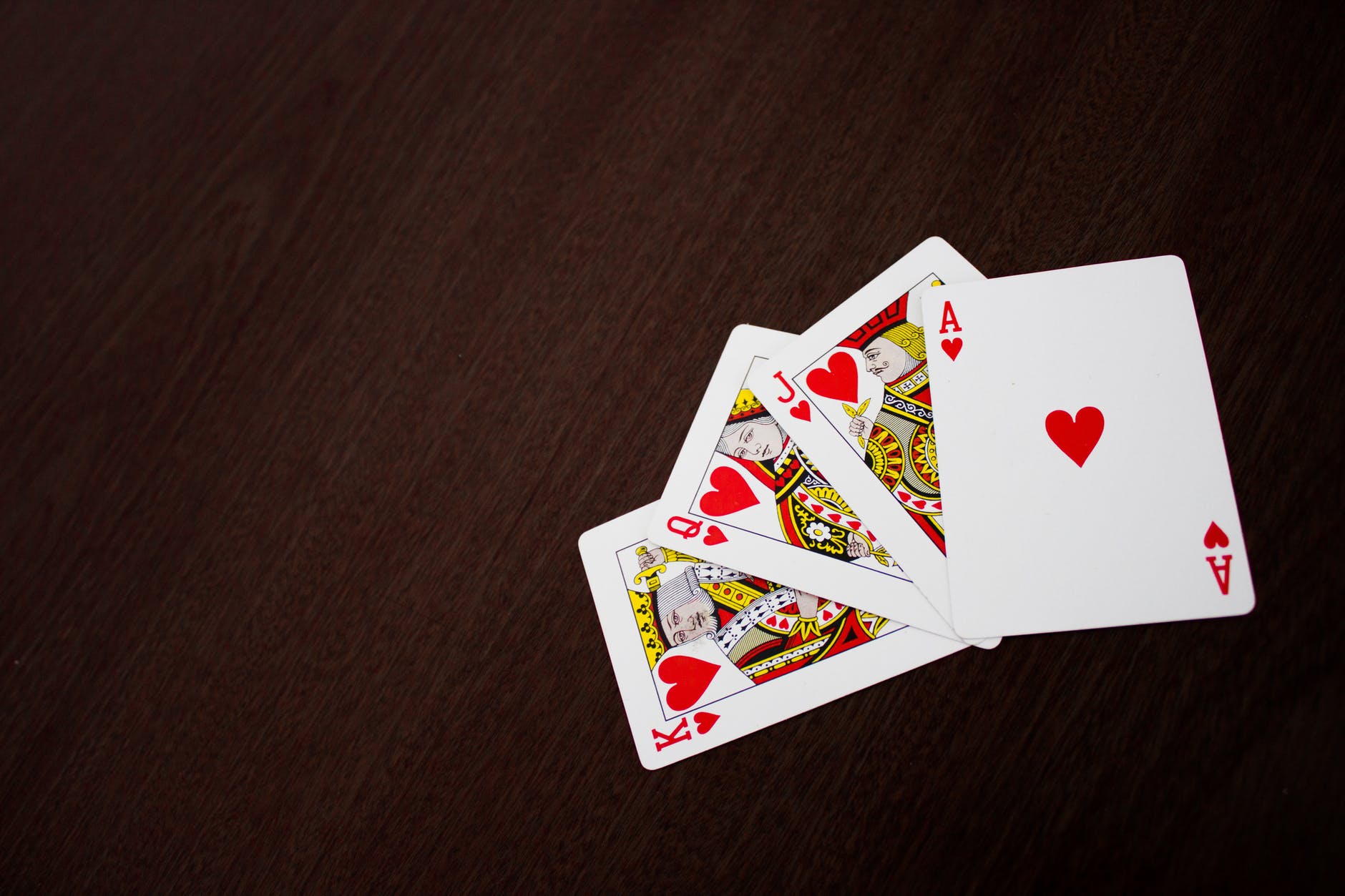
Egyptian Rat Screw goes by a less flattering name among adult card players, but “Egyptian Rapture” is another name for this game you can teach children if you don’t want them saying more baudy version of this game’s name.
Regardless of what you call it, Egyptian Rat Screw is one of the most popular schoolyard card games for a reason. The objective of Egyptian Rat Screw is to collect all of the cards in the central pile. The dealer deals out an entire 52-card deck to the players, with no stockpile left over. Players do not look at their cards.
To play, players draw from their piles and place a card in the center. Players draw until a face card or ace is drawn. The next player must draw a face card or ace, and if they do not the player who laid down the face card or ace wins the pile.
If the next player lays down a face card or ace, the round continues until someone fails to do so. At this point, the pile goes to the last person to lay down a face card or an ace.
The only other major rule for Egyptian Rat Screw is the slap rule. Players can slap on the central deck in Egyptian Rat Screw for a variety of reasons, including two of the same card, a “sandwich” (two cards with a different card between them), or “marriage” (when a king is placed over a queen). The house slap rules for Egyptian Rat Screw vary from game to game. (via Simply Fun Games)
12. Uno

Uno can’t be played with a standard 52-card deck, but it’s still one of the most popular card games for kids that you’ll find.
In Uno, the objective of the game is to get rid of all the cards in your hand by laying them down on the central deck in play according to their number or color. There are also special move cards in Uno such as Reverse, Skip, and Plus cards that can impact who plays next.
Players can use these cards to keep winning players from going out. If a player doesn’t have the correct card, they must keep drawing until they get one. Once the winning player has one card left, they must call out Uno. Otherwise, if another player calls out Uno first, they have to draw.
Uno is a good card game for introducing young children to more complicated card games since the simple symbols, large numbers, and bright colors help them keep their hands in order. Uno is suitable for ages seven and up. (via Card game Info)
13. Gin Rummy
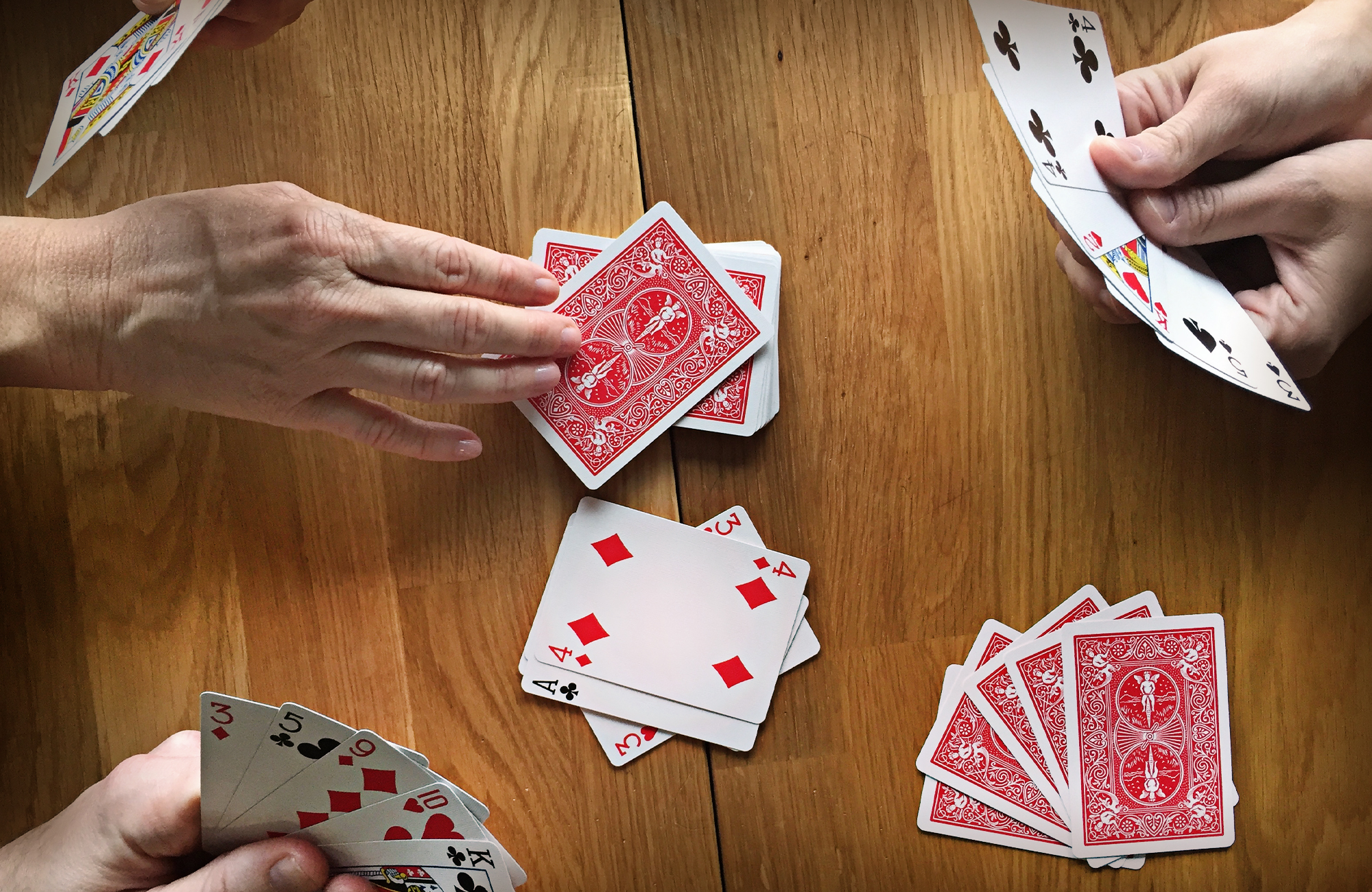
Once children have mastered Uno, they can graduate to other card games which require keeping up with a hand of cards. Gin Rummy is a good intermediate card game to introduce to kids since it is often still played in adulthood too.
Like Uno, the objective of gin rummy is to get rid of all the cards in your hand. Unlike Uno, players in gin rummy attempt to lay down sets of cards such as sequential runs or all-of-a-kind in order to score points.
Cards can be either held in your hand for the element of surprise or laid down as soon as you get a match or set. However, laying down cards shows other players that you’re close to going out and also shows them what you have, so it is a risky strategy.
The more sets of cards you’re able to lay down, the more points you earn. Points that are still in your hand when someone goes out count against your final score.
Gin rummy is one of the more complicated card games that kids can learn to play, but a gin rummy tournament also has the ability to keep children occupied for hours at a time. (via Bicycle Cards)
14. Memory

If you’re trying to keep younger children entertained, Memory (also known as Match) is an easy game to set up for them. Along with being fun to play for kids and adults alike, Memory is a great game choice for helping to exercise kids’ brains by improving their memory retention and their sense of concentration.
The objective of Memory is to win matching pairs of cards. The entire deck of cards is arranged in a large grid on the floor with the cards facing down.
It’s important that the players of the game not see which cards are placed in which spot. To play, each player takes turns lifting up two cards.
If they lift up two cards that are the same number or face (Ex. Two fours, two kings) then they get to keep the set of cards. If the two cards don’t match, they have to put the cards back down.
The object of the game is to remember which cards are placed where so that you can go back to previously overturned cards and pick them up when you realize you’ve drawn a match. (via Primary Delight Teaching)
15. Hasty Baker
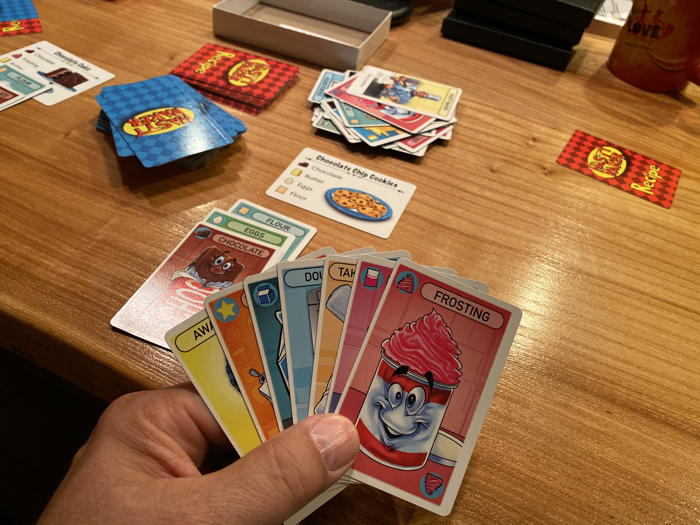
Like Uno, Hasty Baker is a game that needs a specialized deck to play, but it’s a deck worth investing in if you have young kids. This is a competitive team-based card game where each team is responsible for gathering the ingredients to bake a cake faster than the other team.
Hasty Baker includes ingredient cards, recipe cards, and a variety of strategy cards to play that influence the game by spoiling ingredients or allowing players to steal ingredients from the opposing team. Players win points based on how many recipes they are able to execute successfully. (via Go Fatherhood)
Kid Card Games FAQ
What Is a Suit in Card Games?
A traditional deck of playing cards is divided into categories known as suits. These suits help break up a deck of cards into multiple smaller decks and are often involved in the more intricate rules of many card games.
What Is a Face Card?
In a traditional playing card deck, a face card will be any of the following:
- Joker
- Queen
- King
In most card games, face cards are valued more highly than number cards, but not as highly as aces. Jokers are often used as a “wild card” in many card games, while other card games use the ace as a wild instead. Wild cards are traditionally seen in card games where players are drawing cards in order to complete a specific type of set.
What Is a Set in Card Games?
In card games, a set is a grouping of cards that you hold in your hand or place down for points. Sets can be composed of different categories of card groups, such as a numerical set (1-2-3-4) or a set of face cards in order of value (joker, queen, king). Sets are regularly seen in card games where the object of the game is to lay down all of your cards for points.
What Are the Four Types of Playing Cards in a Standard Deck?
The four types of playing cards seen in a standard deck are as follows:
- Clubs
- Spades
- Diamonds
- Hearts
The four types of playing cards in a standard deck are symbolic of the four pillars of the economy in the Middle Ages. The diamonds represented the merchant class, the hearts represented the ruling class, the spades represented the military, and the clubs represented the agricultural class.
These card suits have remained largely unchanged in the past several centuries that people have continued to play cards.
Card Games Conclusion
You may think that it’s not possible to play a game of cards with young children, but these easy game ideas prove that this is not the case! This is sure to create family memories that you will cherish for years to come.
